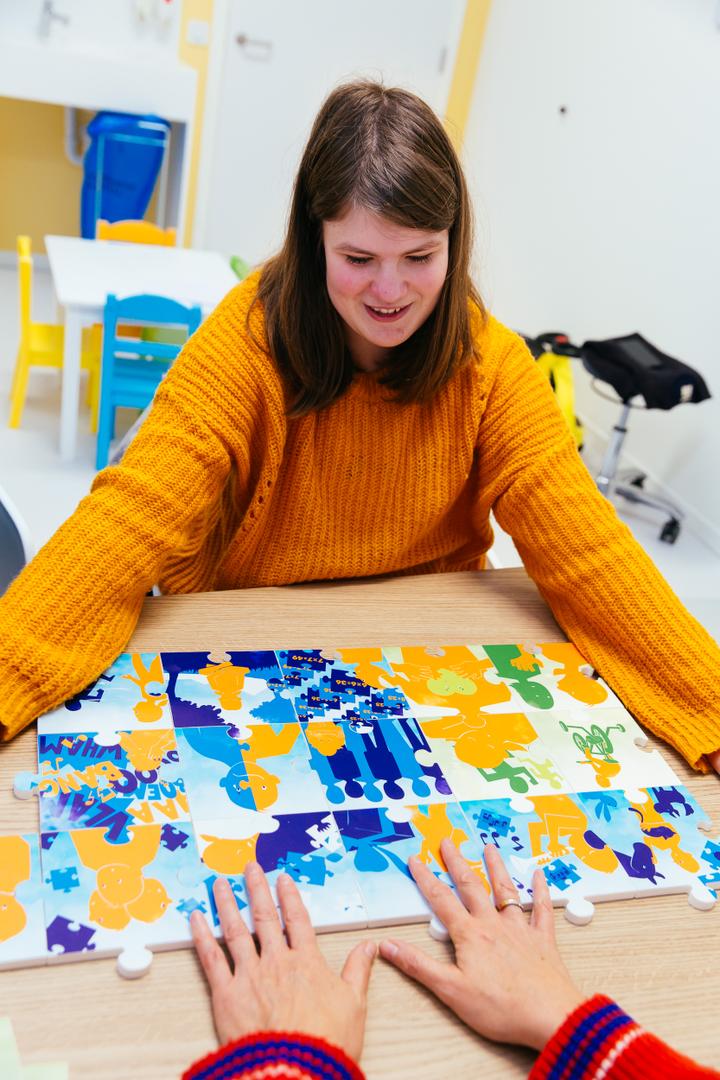For the information package, professor Ann Swillen, clinical remedial educationalist in the UZ Leuven centre for human genetics, started from her own experience. For years she has been seeing parents with a lot of questions about their child's diagnosis of a rare genetic disorder at her consultations. “This can range from questions about what the disorder consists of to what the impact will be on their family and the future. Will their child ever be able to live independently? How can they explain this to their child and to its brothers and sisters? The threshold to start this conversation is often too high, so we want to give families a push in the right direction to express their questions and emotions", professor Swillen explains.
Talking without taboo
The information package consists of two parts. During the consultation children can piece their own unique clinical picture together with colourful jigsaw pieces. The pieces represent both physical characteristics and characteristics connected to thought and emotions. The jigsaw makes an end to the lists, because not every patient with a specific rare genetic disorder will have the same symptoms. At home, the conversation can continue, based on questions in the accompanying family book, which consecutively puts the young patient, the brothers, sisters and the whole family centrally.
(continue below the image)

Professor Ann Swillen: "Every member of the family should know what the disorder involves exactly, so they can talk about it normally. This enables you to move rare genetic disorders out of the taboo atmosphere. My dream is for everyone to understand rare genetic disorders, much in the same way people understand Down's syndrome." At the moment, people are not very familiar with rare genetic disorders, in e.g. schools. At the same time, genetic research is rapidly evolving, enabling us to look at the composition of chromosomes much earlier and especially in a lot more detail.
Wide target group
Piecing the puzzle together was initially developed for children with a 22q11.2-deletion, with a bit of DNA missing on chromosome 22. In the meantime, the package was extended to all young patients with a CNV (copy number variation), a collective name for rare genetic disorders originating from a chromosomal aberration. It involves a bit of missing DNA (a deletion) or a bit of excess DNA (a duplication), causing the development of a certain organ or the way of thinking or feeling to change.
The information package received the financial support of the Koning Boudewijnstichting, which put out a call in 2018 for projects on better supporting brothers and sisters of children and youngsters with a limitation. In addition, the project has the support of the 22q11 DS/Vecarfa fund.
Professor Ann Swillen works as clinical remedial educationalist in the centre for human genetics (CME) of UZ Leuven. The centre informs people and families confronted with congenital disorders and is strongly linked to clinical and lab activities and scientific research.

